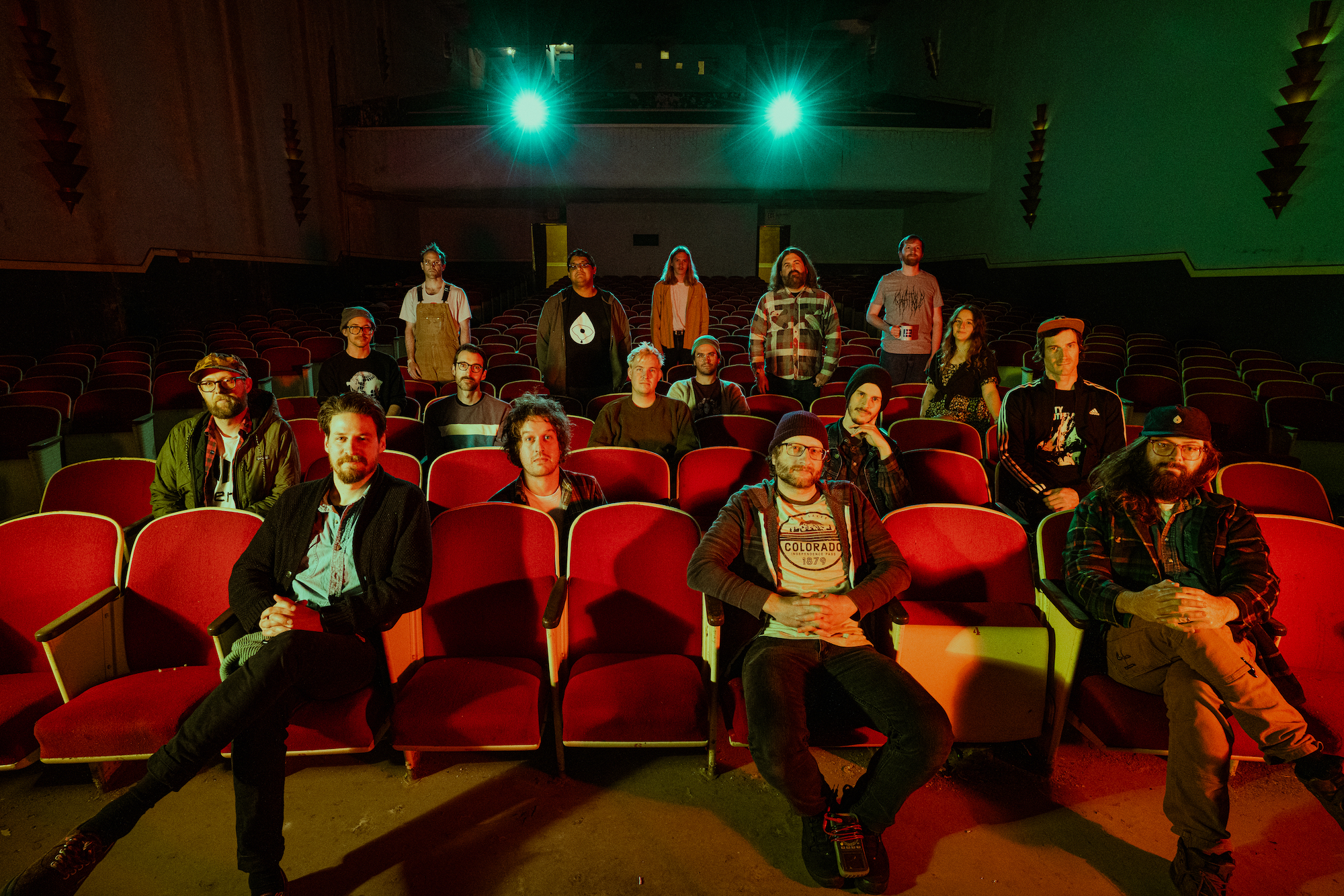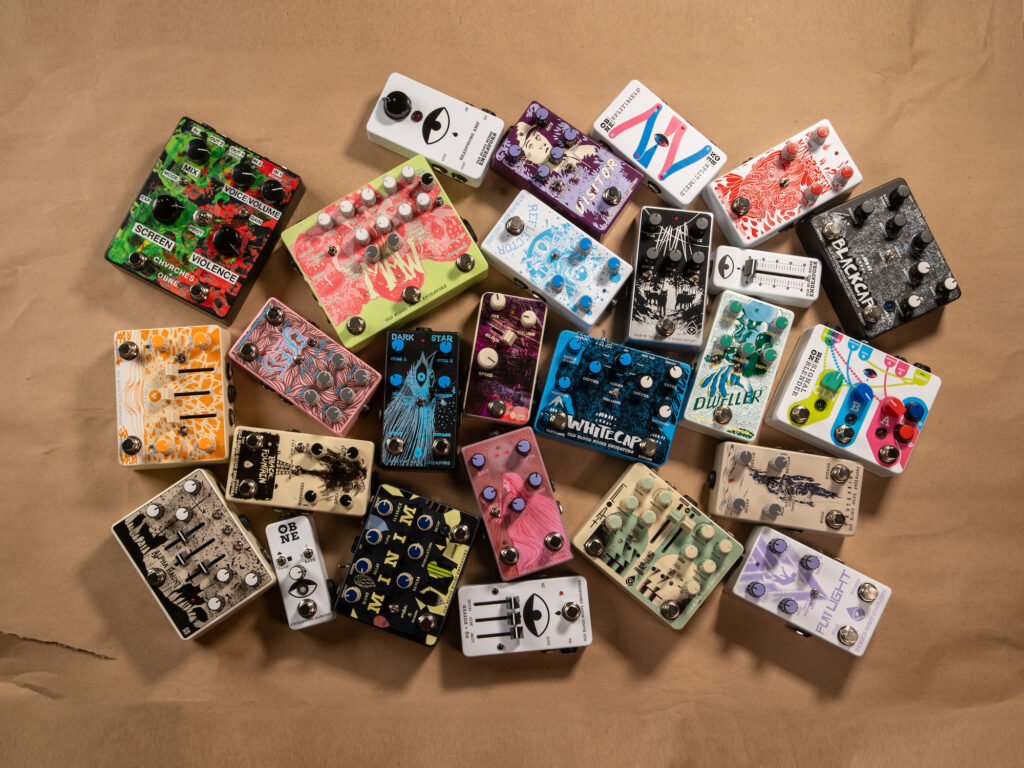

When Brady Smith started working at Keeley Electronics in the late 2000s, he didn’t realize that he’d form two guitar effects pedal companies in the not-too-distant future. When he started Walrus Audio with an investor friend in 2011, Smith probably didn’t expect he’d be abandoning it merely a few years later for yet another new project, Old Blood Noise Endeavors.
Yet that’s exactly what happened. Smith and Seth McCarroll launched Old Blood in 2014, and the duo spent most of the last decade creating one of the most unique and complex guitar effects pedal companies on the market.
More from Spin:
- Doug Kauer on Designing Truly Unique Guitars and Guitar Racks
- How FSC Instruments Became One of New York City’s Top Bespoke Guitar Manufacturers
- IdiotBox Effects Fuses Pop Culture Nostalgia With Unique Guitar Pedals
Old Blood offers some more basic options — the Haunt Fuzz, the simple (yet unique) Black Fountain delay, the Fault Overdrive + Distortion, and plenty of “utility” pedals — but where they really really shine is when things get weird. Need different types of multi-layered reverbs? OBNE’s got you covered. Reverse and modulated delay pedals or asynchronous dual tremolos? Yep, Old Blood does that too, and they do them better than just about anyone else.
Throw on top of that some memorable artwork and a unique collaboration with bands like CHVRCHES, and it’s no wonder that the Oklahoma-based Old Blood is one of the biggest names in the South’s pedal scene.
SPIN spoke with Smith about life in the pedal industry, OBNE’s unique options, and why he decided to make some of the “boring” pedals that everyone needs.
SPIN: Seeing as you really grew up working for others within the pedal industry, what’s it like to see how strongly people get attached to their Old Blood pedals?
Brady Smith: I think that’s something I’m yet to come to terms with. It still feels like what we’re doing is in this little vacuum of things that interest us, and it’s like we just have to make something or find new ways to pay rent, payroll, and all of the other bills. It feels like we’re doing the same thing we’ve always done, which is trying to create something unique, soundwise, that tickles us in a certain way. Every now and again, I’ll look up and realize where we’re at in the scheme of the musical instrument industry and the guitar pedal industry. I’ll remember that it’s cool that people appreciate what we’re doing and use the stuff we’re making. It’s a little bit surreal sometimes.
Speaking of unique-sounding pedals, what goes into creating some of the really complex Old Blood offerings rather than just making a slight twist on a Tube Screamer or a RAT?
When we started out in 2014, there were a lot of different garage and basement builders doing fuzzes, distortions and analog overdrive circuits that you can put your own spin on pretty easily. We wanted to steer clear of that from the get-go. We wanted to explore different modulations, different ways of creating ambient textures and everything that goes along with that. We still use all the overdrives and distortions and basic pedals that you can think of, but our ethos is a little more like “How can we make something that answers a question that people don’t know they have, solves a problem they don’t know they have or creates a new problem for them? How can we get people out of their box, creatively, to explore and see what comes out?” That’s where we wind up with a lot of stuff.

Considering how often you do it, how do you decide when to merge two effects into one pedal?
I think that comes from playing and having a fair amount of effects that I’d try to use for songwriting and stuff. You stack enough things in a certain order, you come up with effects that don’t quite have names or single pedals that can replicate them — like it’s a new effect. You know, there’s, there’s only so many genres of effects that are out there, there’s nothing that’s like, new all of a sudden, right? Nobody had really thought of it, there’s tremolo, delay, reverb, chorus, all these things they’re already defined. So when you throw them together, it just creates a new a new texture, a new way of processing, the input that you’re giving it, and so I don’t know, I think I think that’s one of the ways that we explore it, like, you add effects together and limit their controls and ranges in order to guide it towards something new.
It often feels like you’re trying to do something different visually with the artwork on your pedal enclosures as well.
From the beginning, Seth and I built out the process that was established at Walrus, which were these elaborate designs that were sort of cartoony, but not in a comic kind of way. They were well-drawn identifiers for each pedal, and we carried that into Old Blood. But this time, we tried to lean into making each pedal its own thematic thing. In the earlier stuff, there’s some sci-fi, some western, and some other cinematic elements that play into creating the personality of each pedal. We decided early on to try to use a different artist for each release, which diversified the feel of each pedal. We’ve had a couple of people repeat as artists, which has also been fun. We just give them the effect and the proposed name and see what they come up with and where that leads us.
In addition to the crazy effects pedals Old Blood makes, you also put out some very basic and affordable utility pedals, like an AB/Y Switcher and Expression Slider. What inspired that side of the brand?
We’ve got a couple of really practical members of the team, so they started throwing those ideas out. It’s simple circuit stuff and it’s easy to just have it in the catalog, so when people want it, they can choose to buy it from us instead of whatever mega pedal company. That was the first iteration of our utility devices, and then we started trying to stretch what that “utility” label could be. The Expression Ramper and Signal Blender are technically utility items, but they’re also things that will hopefully push people to be more creative with what they have. We’re continually exploring how we use pedals and how we can do more with them ourselves, so it’s fun to see how some of this stuff hits with people.
What was the story behind the CHVRCHES collaboration, Screen Violence?
That was a fun project. They reached out in 2020 when touring and stuff had slowed down. We were still fully operational, just with a lot of people working from home, so we were a little bit slower with our processes. I think Martin [Doherty] had gotten into building pedal kits and clones and stuff like that, so he was coming at it from that background of really being interested in how pedals are made and how to explore different effects. We did a good amount of back and forth on what the idea was, and then we started packaging those things together based on how we’d done some of our existing effects. It took like two years, but we landed with Screen Violence coming out in May of ‘22. We went out and met them when they played in Tulsa in November ‘21, but we mostly just did Zoom stuff, since they’re spread out and we’re here in the middle of the country.
To see our running list of the top 100 greatest rock stars of all time, click here.
The post IdiotBox Effects Fuses Pop Culture Nostalgia With Unique Guitar Pedals appeared first on SPIN.